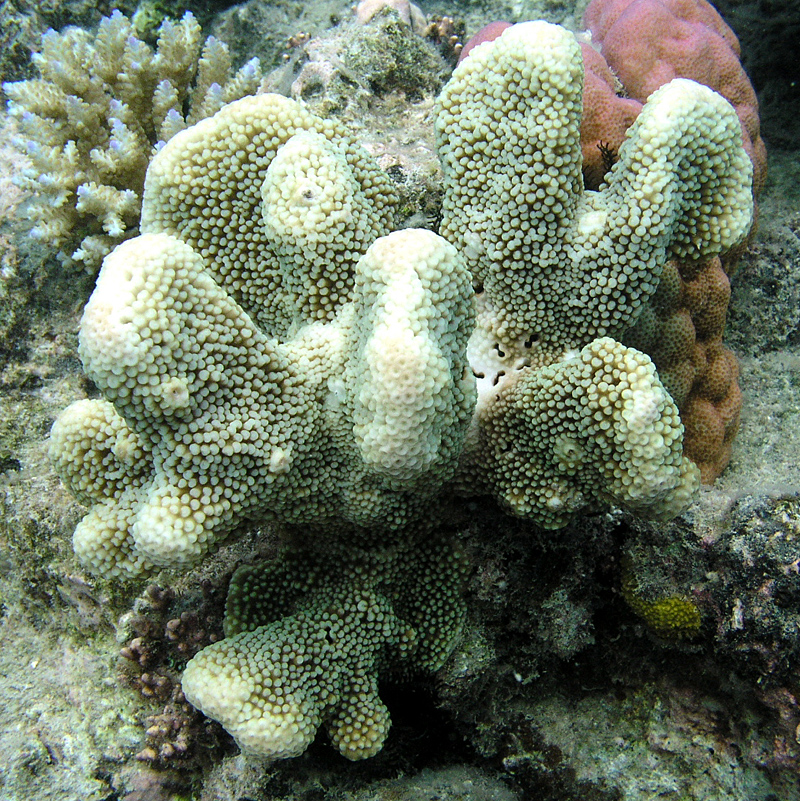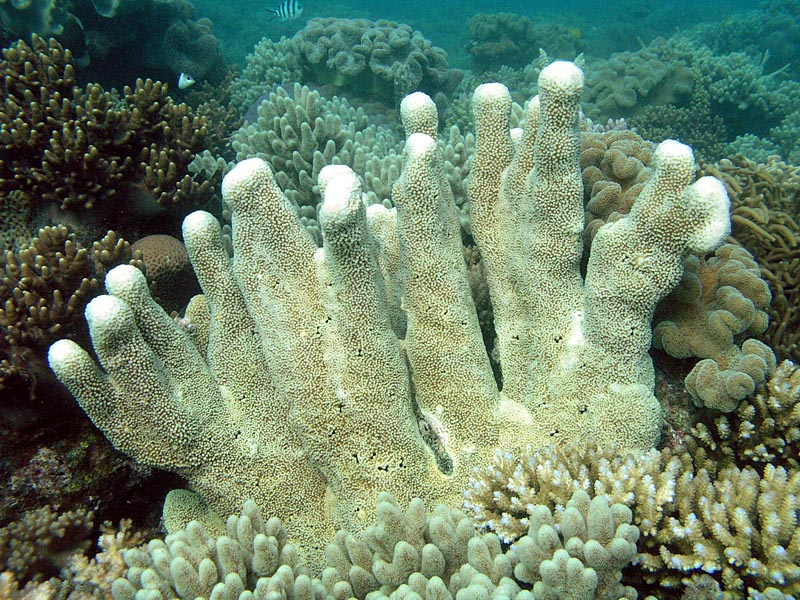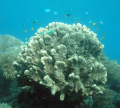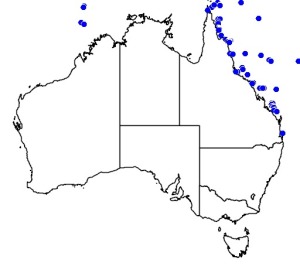
©Andy Lewis: A colony of Isopora palifera from the reef crest near South Island, showing the parallel ridge growth form of the species in high wave energy habitats
Colours
Distinguishing features
A robust species that forms pillows, ridges, and submassive clumps up to 2 m in breadth. Clusters of axial polyps are found along the branch and ridge ends, and the radial corallites are rounded. Most specimens are pale brown.
Isopora cuneata is very similar and the species can be difficult to seperate without biochemical analysis. I. palifera has slightly larger, elongate corallites and more robust branches, and is more abundant in sheltered back reef habitats. (Contributed by Andy Lewis)
Size
- Size data has not been obtained.
Synonyms
Similar taxa
Distribution
Distribution and habitat preferences
High wave energy areas such as front reef slopes, reef crests, flats, and exposed back reef bommies.
Abundant in shallow, wave exposed habitats around Lizard Island.
Behaviour
The genus Isopora is unique amongst the Acroporidae in that the oocytes are fertilised inside the parent polyp, the larvae are brooded until release, and settlement can occur immeadiately. Colonies are simultaneous hermaphrodites, and planula release occurs throughout much of the year at Lizard Island.
Web resources
References
- Abrego, D., M.J.H. Van Oppen and B.L. Willis (2009). Onset of algal endosymbiont specificity varies among closely related species of Acropora corals during early ontogeny, Molecular Ecology, 18: 3532-3543.
- Aldredge, A.L. and J.M. King (1977). Distribution, abundance and substrate preference of demersal zooplankton at Lizard Island lagoon, Great Barrier Reef, Marine Biology, 41: 317-333. LIRS catalog number 1.
- Anderson, K.D., N.E. Cantin, S.F. Heron, C. Pisapia and M.S. Pratchett (2017). Variation in growth rates of branching corals along Australia�s Great Barrier Reef, Scientific Reports, 7: 2920, DOI:10.1038/s41598-017-03085-1. LIRS catalog number 2132.
- View all references






